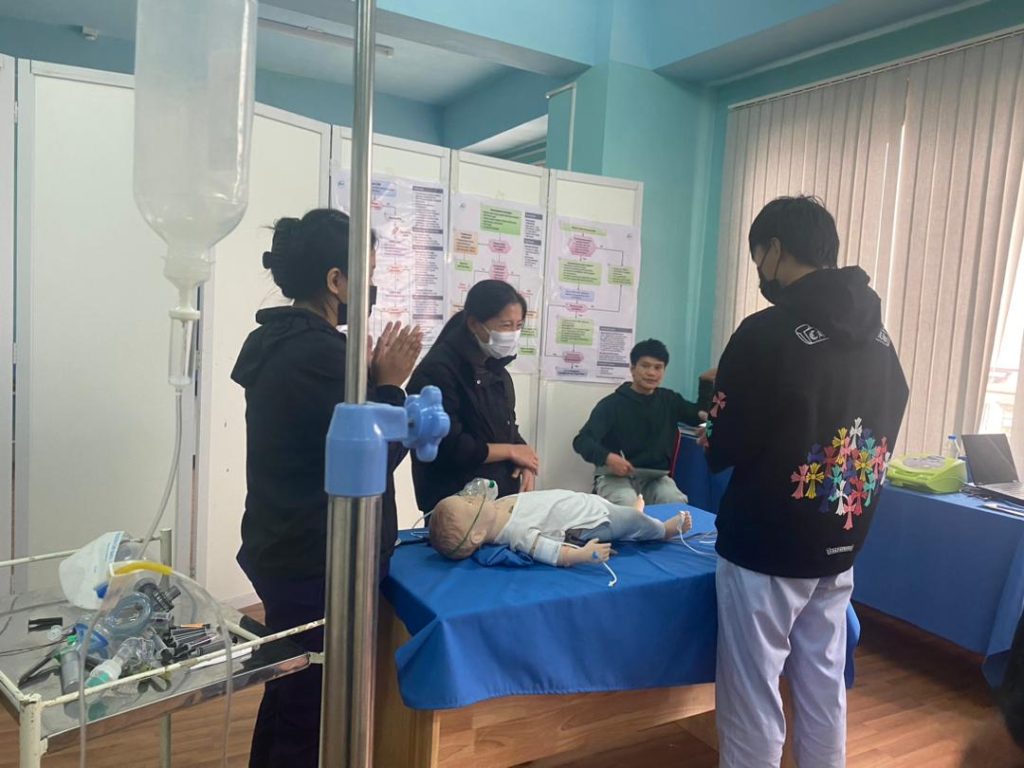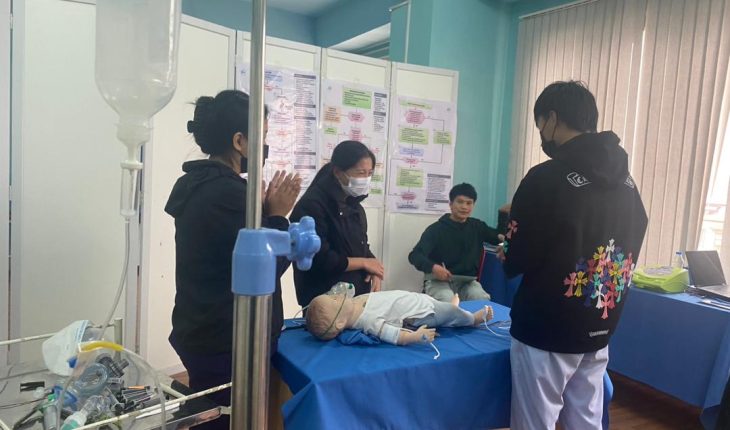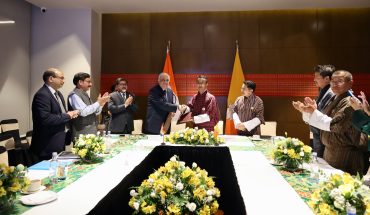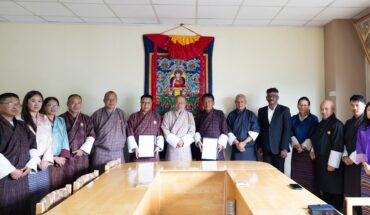
DAWA ZANGMO | Thimphu
hutan is making a major stride in advancing medical education and healthcare training through a landmark initiative known as Druk Sokchop, which translates to “Bhutan Life Savers.”
The program, launched with the support of the Japan International Cooperation Agency (JICA), is designed to equip healthcare providers, teachers, child educators, and office staff with vital skills ranging from basic first course to advanced medical procedures.
This initiative represents a significant shift in Bhutan’s approach to medical training, moving away from dependence on overseas programs and instead building a self-sufficient, high-quality system tailored to Bhutanese needs and culture.
“In past Year, we depended on foreign countries even for basic training, but now we have our own courses. We have already trained over 1,000 people and 500 instructors,” said Tshewang Rinzin, a lecturer at the Khesar Gyalpo University of Medical Sciences of Bhutan (KGUMSB).
He added that their courses are similar to those in countries like Singapore, the USA, and Japan.
At the heart of Druk Sokchop’s achievements is the establishment of three advanced simulation centers in JDWNRH, CRRH in Gelephu and ERRH in Mongar.
These centers provide hands-on training using high-fidelity mannequins and simulators that replicate real-life medical scenarios. The facilities allow students and healthcare workers to practice in safe, controlled environments before applying their skills in actual hospitals and clinics.
“These centers take students to real-life situations which engage into informative session. Simulators which cost more than millions worth can cry, breathe, and mimic distress, enabling trainees to practice CPR, intubation, and emergency care,” Tshewang Rinzin added.
He said, such technology ensures trainees gain confidence and competence before stepping into critical, high-pressure environments.
JICA has played a crucial role in equipping Bhutan’s training institutions with essential medical tools, laboratory equipment, and infrastructure upgrades.
Classrooms and laboratories across regional centers have been refurbished and fitted with smart projectors, smart water dispensers, and strategically placed power outlets to support advanced training devices.
Additionally, UNICEF has contributed to the initiative by supporting about 5% of the project cost, primarily through the provision of key equipment and facilities.
These contributions have enhanced training spaces with necessary furniture, improved heating systems, and other utilities, ensuring a more conducive environment for effective learning.
Before the launch of Druk Sokchop, many Bhutanese medical professionals were sent abroad for training. This not only placed financial strain on the government but also limited opportunities to design programs aligned with Bhutan’s cultural and healthcare context.
Now, Bhutan offers 12 structured courses under Druk Sokchop, specifically crafted to suit local needs. These programs range from basic life support to more advanced emergency medical training, ensuring that learners receive practical, relevant, and high-quality education without having to leave the country.
Officials said, by tailoring training programs locally, Bhutan ensures both quality and cultural sensitivity.
They added the initiative bridges a crucial gap by producing health professionals who are not only skilled in global medical practices but also well-versed in the unique challenges and needs of Bhutanese communities.
The partnership with JICA has provided more than just modern training tools it has also contributed significantly to strengthening Bhutan’s overall capacity to produce confident and competent healthcare professionals.
“Druk Sokchop has transformed medical education by enabling learning in Bhutan. It helps our health workers become better prepared, makes our training more sustainable, and strengthens the resilience of our system,” Tshewang Rinzin stated.
The introduction of simulation-based education is particularly impactful.
Unlike traditional classroom instruction, simulation offers a more interactive and practical approach, where trainees can safely make mistakes and learn from them without risking patient safety.
This method, they said, builds confidence, reduces errors, and significantly improves preparedness for real-life emergencies.
The ripple effects of Druk Sokchop are already visible. Healthcare centers across the country are benefiting from better trained professionals, while communities gain confidence in the services available to them.
The presence of locally trained instructors ensures that knowledge and expertise remain within Bhutan, reducing long-term dependency on external trainers.
Furthermore, the program has strengthened Bhutan’s academic and professional networks. By building a cadre of local trainers and instructors, Druk Sokchop ensures continuity and scalability of medical training in the years to come.
The program also provides opportunities for collaboration between national and international health institutions, enriching Bhutan’s medical education landscape.
With the backing of JICA and the contributions from UNICEF, Bhutan’s medical training system is rapidly evolving into a model of sustainability and self-reliance.
The program not only addresses the immediate need for skilled healthcare professionals but also sets the foundation for a long-term transformation in medical education.
Through practical, hands-on training and improved facilities, Bhutan is preparing a new generation of health workers who are equipped to meet both current and future challenges in the healthcare sector.





